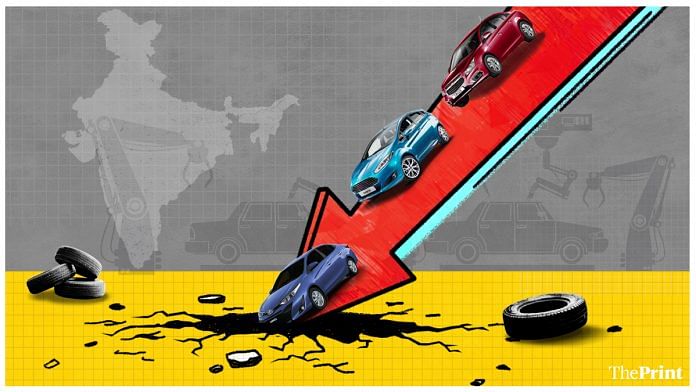If you leave out Hyundai, which has become a bigger car manufacturer than Ford and General Motors (by numbers, not value), the top four global makers of automobiles command barely 6 per cent of the Indian passenger vehicle market. Among them, General Motors (GM) left India four years ago. Ford’s announced exit now will make little difference since it has less than 2 per cent of the market. And the global No. 1 (Volkswagen), together with its Skoda subsidiary, has barely 1 per cent. Of the big four, Toyota has been the most successful, but has barely 3 per cent of the market. And recall that even Toyota, while complaining of high taxes, announced a halt last year to further investment in India before quickly retracting. Regardless, it has stopped the production of two three-box models, the Etios and Corolla Altis. Honda on its part has stopped the production of the Civic and Accord.
So why is India becoming a graveyard for the world’s auto majors? One answer is that the Indian car market is no longer what it once promised to be, its global ranking expected to move from fourth to third — again, measured by vehicle numbers, not value. Instead, it has slipped to fifth (overtaken by Germany) because the market levelled off and then shrank for two years before recovering this financial year. This is part of the larger story about the loss of momentum in India’s consumer markets.
The second answer to the question, of why global car majors have suffered punctures, is price. India is a market for low-priced cars with low running costs. The global majors don’t have models that fit into that framework because most of the world goes for larger cars. Only Maruti and Hyundai (which between them command two-thirds of the market) have successful entry-level models. The best that GM could do before it quit (after switching from the staid Opel badge to the Chevrolet) was introduce small-car models that its partners had in South Korea and China. They were a poor fit with the Chevrolet image. Neither Ford nor Toyota or VW or Honda has a car to compete with Maruti’s best-selling Alto, which has ruled the entry-level market with its Rs 3-lakh price tag. Most global majors don’t know how to make a car at that cost.
Also read: How cars fueled by ethanol can add to India’s food inflation
The market is changing, of course. As consumers have grown richer, they have begun to aspire for something more than a basic 800-cc car. The leading hatchbacks now are bigger, more feature-laden models like the i20 from Hyundai, the Swift and Baleno from Suzuki, and two Tata Motors offerings (the Tiago and Altroz) that have given a new credibility to that company’s car-making gambit. These hatchbacks are mostly in the Rs 6-10-lakh price range, where the global majors could have competed if they were not already tired and ready to give up. Meanwhile, the Hyundai-group entity, Kia Motors, has entered India with mini-SUV models and now competes with Tata and Mahindra for the third slot in the market (behind Maruti and Hyundai).
The other feature of the car market is that export success has to be built on a domestic base. Ford set up a second, large-scale car plant in Gujarat (adding to one in Tamil Nadu) because it looked forward to a free-trade agreement (FTA) that would open up the European market to cars from India. The FTA has not happened. And because the company has had only one moderately successful model in India, it has not been using three-quarters of its production capacity. An exit then became inevitable.
In the end, car markets are sticky. No one has been able to challenge Maruti’s early-bird ownership of India’s market. It’s the same in France, Germany, Italy, Japan, and South Korea; the early local car makers dominate. Nor does ownership of one segment (like small cars) spell success in other segments — witness Maruti’s failure to make headway with its Ciaz sedan against Honda’s City. It’s a tough world and success has to be earned, in each market and each segment.
Also read: Indians took loans for houses & cars through pandemic, but not for education, RBI data shows



